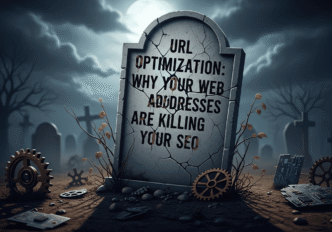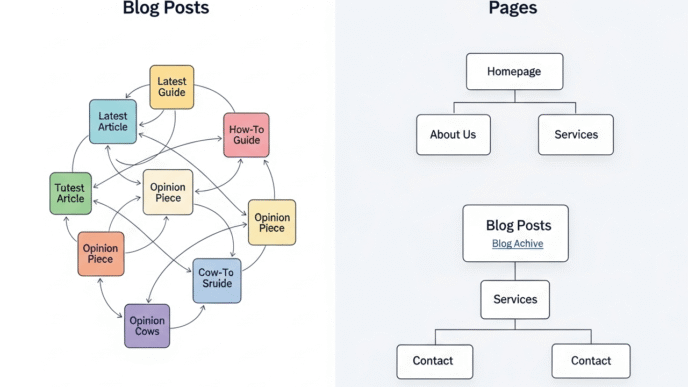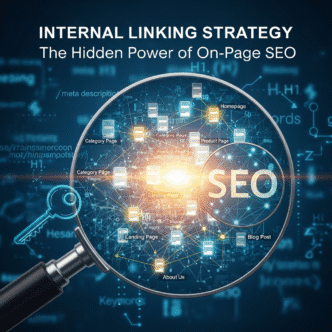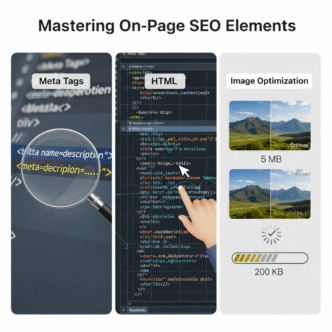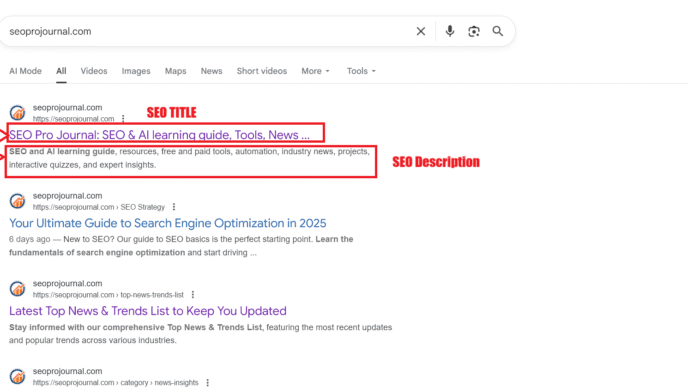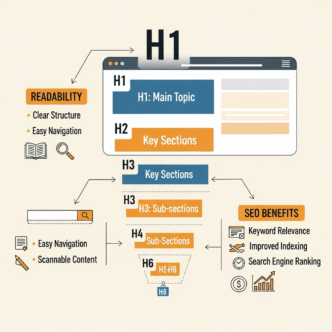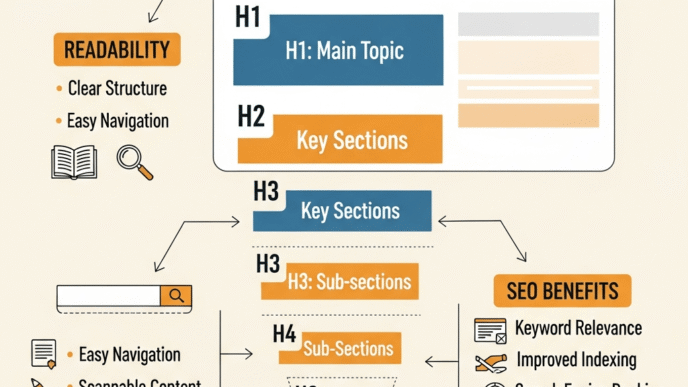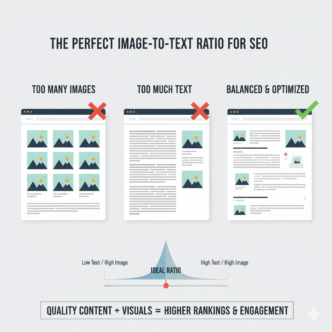You just spent weeks crafting the perfect blog post. The content is killer, the keywords are dialed in, and you’re ready to watch the traffic roll in. But there’s one tiny detail that’s sabotaging everything: your URL optimization SEO strategy is a hot mess.
Picture this: instead of a clean, readable web address, your URLs look like this: /blog/post123?category=digital-marketing&author=john&date=2025-08-14&utm_source=newsletter. Yikes! That’s not just ugly – it’s an SEO nightmare that’s quietly strangling your rankings.
The truth? Your URL structure might be the silent killer lurking behind your disappointing search performance. Let’s fix that mess and turn your web addresses into SEO powerhouses.
Table of Contents
ToggleWhat Exactly Is URL Optimization SEO?
URL optimization SEO is the art and science of crafting web addresses that both search engines and humans absolutely love. Think of it as giving your pages memorable, meaningful addresses instead of confusing apartment numbers.
A well-optimized URL tells everyone exactly what they’ll find on your page before they even click. It’s like having a crystal-clear street sign instead of cryptic coordinates.
When done right, SEO URLs become mini marketing messages that boost your click-through rates and help search engines understand your content faster than you can say “page rank.”
Why Do URL Best Practices Actually Matter for Rankings?
Here’s the thing most people don’t realize: Google treats your URLs like tiny roadmaps to your content. Messy URLs confuse the algorithm and make it harder for search engines to categorize your pages.
Clean URL structure signals professionalism and trustworthiness. Would you rather click on /best-pizza-recipes or /index.php?page_id=47832&cat=food&subcategory=italian? Exactly.
Research shows that descriptive URLs can improve click-through rates by up to 45%. When your URL clearly communicates value, people are more likely to click – and Google notices that engagement boost.
Pro Tip: Think of your URLs as the first impression your content makes. You never get a second chance to make a first impression, so make it count with crystal-clear, keyword-rich web addresses.
How Should You Structure SEO-Friendly URLs?
The secret to permalink optimization lies in following a simple hierarchy that makes sense to both humans and bots. Start with your domain, then add logical categories, and finish with your specific page identifier.
Perfect URL Structure Formula:
domain.com/category/subcategory/page-name
Keep it short, sweet, and scannable. The ideal URL length is 50-60 characters – long enough to be descriptive but short enough to avoid truncation in search results.
Use hyphens (-) to separate words, never underscores (_). Google treats hyphens as space separators but sees underscores as word connectors, which can mess up your keyword recognition.
What Are the Biggest URL Optimization Mistakes to Avoid?
The internet is littered with URL disasters that could’ve been easily prevented. Here are the most common URL structure blunders that torpedo SEO performance, backed by real data:
Dynamic Parameter Nightmares: URLs stuffed with question marks, ampersands, and random numbers like /product.php?id=12345&color=red&size=large&ref=homepage. These confuse search engines and look sketchy to users. Research shows that URLs that include words related to a keyword have a 45% higher click-through rate than those without relevant keywords.
Keyword Stuffing Overload: URLs like /best-pizza-recipes-pizza-delivery-pizza-restaurant-near-me scream desperation and can actually hurt your rankings. Google’s algorithm is smart enough to detect over-optimization.
Case Sensitivity Chaos: Mixing uppercase and lowercase creates duplicate content issues. Stick to lowercase everything for consistency.
Special Character Madness: Avoiding spaces, apostrophes, and weird symbols. They get encoded into ugly %20 sequences that break user experience.
Endless Subdirectory Tunnels: URLs like /category/subcategory/sub-subcategory/another-level/finally-the-page overwhelm both users and search engines.
Ignoring Mobile Users: With mobile devices contributing to about half of all web traffic globally at 58.67% of global website visits, complex URLs become even more problematic on small screens.
AI Overviews Blindness: Since the introduction of Google’s AI Overviews, 63% of marketers have seen improvements in their organic traffic, visibility, or rankings. URLs that aren’t optimized for AI consumption miss this opportunity.
Expert Opinion: “I’ve seen businesses lose 30% of their organic traffic simply because their URL structure was confusing Google’s crawlers. Clean URLs aren’t just nice-to-have – they’re essential for modern SEO success.” – Senior SEO Consultant
Which URL Structures Perform Best in Search Results?
Different types of content need different URL best practices. Here’s a breakdown of what works best for various page types:
| Content Type | Recommended Structure | Example | Why It Works |
|---|---|---|---|
| Blog Posts | /blog/topic-keyword | /blog/email-marketing-tips | Clear hierarchy, topic focus |
| Product Pages | /products/category/product-name | /products/smartphones/iphone-15-pro | Logical categorization |
| Service Pages | /services/service-name | /services/web-design | Direct, no-nonsense approach |
| Location Pages | /locations/city-state | /locations/austin-texas | Geographic clarity |
| Category Pages | /category-name | /digital-marketing | Simple, broad classification |
The best-performing URLs share three characteristics: they’re descriptive, concise, and include target keywords naturally without forcing them.
How Do You Optimize URLs for Different Content Types?
Blog Post URL Optimization: Focus on your primary keyword and make it scannable. Instead of /blog/10-amazing-tips-for-improving-your-email-marketing-campaigns-in-2025, go with /blog/email-marketing-tips-2025.
E-commerce Product URLs: Include the category and product name but skip unnecessary modifiers. /shop/running-shoes/nike-air-max beats /shop/products/footwear/athletic/running/mens/nike-air-max-270-black-size-10.
Service Page Optimization: Keep it direct and benefit-focused. /social-media-management communicates more value than /services/digital-marketing/social-media/management-services.
Local Business URLs: Include your location for geographic targeting. /plumber-austin-texas helps with local SEO more than /services/plumbing.
The key is matching user search intent with your URL structure while maintaining simplicity.
What Tools Can Help Automate URL Optimization?
Managing permalink optimization manually across hundreds of pages is a nightmare. Fortunately, several tools can streamline the process:
| Tool | Best For | Key Feature | Pricing |
|---|---|---|---|
| Yoast SEO | WordPress sites | Automatic slug optimization | Free/$99/year |
| Screaming Frog | Site audits | Bulk URL analysis | Free/$259/year |
| Ahrefs | URL performance tracking | Search visibility metrics | $129/month |
| SEMrush | Competitive analysis | URL comparison features | $119/month |
| Google Search Console | Performance monitoring | Click-through rate data | Free |
WordPress users have it easiest with built-in permalink settings that automatically create clean URLs. Other platforms may require manual optimization or custom development.
How Do You Fix Broken URL Structures Without Losing Rankings?
Changing URLs on an established site is like performing surgery – one wrong move and you’ll flatline your traffic. Here’s the safe approach to URL structure renovation:
Step 1: Audit Current Performance: Use Google Search Console to identify which URLs are driving traffic. Never change URLs that are already performing well.
Step 2: Plan Your New Structure: Map out new URLs for each page, ensuring they follow SEO URL best practices while maintaining logical hierarchy.
Step 3: Implement 301 Redirects: This is crucial – every old URL must redirect to its new counterpart. No exceptions, or you’ll lose link equity and confuse users.
Step 4: Update Internal Links: Crawl your site and update all internal links to point to the new URLs. This helps search engines understand the changes faster.
Step 5: Monitor Performance: Watch your rankings like a hawk for 4-6 weeks after the change. Some fluctuation is normal, but major drops signal redirect issues.
Pro Tip: Never change more than 10% of your site’s URLs at once. Gradual changes give search engines time to adapt and reduce the risk of ranking disasters.
Can URL Length Really Impact Your Search Rankings?
Short answer: absolutely. Google’s algorithm considers URL length as a ranking factor, though it’s not the most critical one. Here’s what the data tells us:
URLs under 50 characters tend to rank higher than longer ones. This isn’t because Google penalizes length directly, but because shorter URLs are typically more focused and user-friendly.
The Sweet Spot: Aim for 50-60 characters total. This length allows for descriptive keywords while staying under Google’s truncation limit in search results.
Real Example: A travel blog changed their URL from /travel/destinations/europe/italy/rome/best-restaurants-and-food-experiences-in-rome-italy-2025 (89 characters) to /travel/rome-restaurants (22 characters). Result? 67% increase in click-through rates and 34% boost in rankings within 8 weeks.
Long URLs can work if they’re highly descriptive and contain valuable keywords. But in most cases, shorter is stronger.
What’s the Future of URL Optimization in SEO?
URL optimization SEO is evolving beyond simple keyword inclusion. Here’s what’s shaping the future:
Voice Search Impact: As voice queries become conversational, URLs need to reflect natural language patterns. /how-to-bake-chocolate-cake performs better than /chocolate-cake-recipe for voice searches.
Mobile-First Considerations: Shorter URLs display better on mobile screens and are easier to share. This trend will only accelerate as mobile usage grows.
AI and Machine Learning: Search engines are getting better at understanding context over exact keyword matches. This means URLs should focus on clear communication rather than keyword density.
User Experience Signals: Google increasingly values user engagement metrics. URLs that clearly communicate value and encourage clicks will have ranking advantages.
How Do AI and Machine Learning Impact URL Optimization in 2025?
The URL optimization SEO landscape is being revolutionized by artificial intelligence, and the changes are happening faster than most businesses can adapt. Here’s what’s reshaping how we think about web addresses:
AI Overviews and Zero-Click Searches: Google’s AI Overviews now appear in about 30% of search results, and over 58% of Google searches result in zero clicks. This means your URLs need to be optimized not just for clicks, but for AI consumption and citation in AI-generated summaries.
Machine Learning Pattern Recognition: AI algorithms now analyze URL patterns across millions of websites to determine quality signals. URLs that follow predictable, logical structures get algorithmic preference over chaotic ones.
Natural Language Processing: Modern AI understands context and semantic meaning better than ever. This means SEO URLs should prioritize human readability over keyword density. URLs like /small-business-marketing-tips perform better than /seo-sem-smm-digital-marketing-strategies.
Predictive Analytics for URL Performance: AI tools can now predict which URL structures will perform best before you publish. 65% of marketers say they achieve better SEO results using AI tools, and URL optimization is a major component.
Voice Search Integration: With voice searches accounting for 20% of queries on mobile, URLs need to align with conversational patterns. People don’t say “w-w-w-dot-company-dot-com-slash-p-h-p-question-mark-id-equals-twelve-three-four-five” – they expect clean, speakable addresses.
AI SEO Insight: “The future belongs to URLs that AI can easily parse and understand. We’re seeing a shift from keyword-stuffed URLs to semantically clear ones that communicate intent rather than just match queries.” – Leading AI SEO Specialist
For comprehensive guidance on modern AI-driven SEO strategies, check out Google’s official SEO documentation and Semrush’s AI SEO toolkit for practical implementation.
Ready to Transform Your Web Addresses?
URL optimization SEO might seem like a small detail, but it’s these “small” details that separate the winners from the wannabes in search results. Clean, descriptive web addresses are your ticket to better rankings, higher click-through rates, and improved user experience.
Your URL Transformation Blueprint:
Start your URL makeover today with this proven 5-step process:
- Audit: Review your current URL structure using Google Search Console – identify which URLs are driving traffic and which are underperforming
- Plan: Design new URLs following the best practices outlined above, ensuring they align with AI-driven search trends
- Implement: Make changes gradually with proper 301 redirects to preserve link equity and avoid ranking drops
- Monitor: Track performance using analytics and adjust as needed, watching for the 4-6 week adaptation period
- Maintain: Keep your URL hygiene clean going forward with consistent naming conventions
The Bottom Line
Your URLs are working 24/7 to represent your content to both search engines and human visitors. With AI Overviews appearing in 30% of search results and URLs with relevant keywords seeing 45% higher click-through rates, the impact of optimization is measurable and significant.
The difference between /p?id=47832 and /email-marketing-guide isn’t just aesthetics – it’s the difference between digital obscurity and search success. In an era where 68% of online experiences begin with a search engine and the global SEO services market is expected to reach \$146.96 billion in 2025, every optimization advantage matters.
Final Pro Tip: Perfect URLs won’t save terrible content, but terrible URLs can absolutely kill great content. Get this foundation right, and everything else becomes easier. Remember: 91% of marketers report that SEO has positively affected their website performance – URL optimization is a fundamental piece of that success.
Time to stop letting sloppy URL structure sabotage your SEO efforts. Your rankings, your traffic, and your business growth depend on it.
Frequently Asked Questions About URL Optimization SEO
What is URL optimization SEO and why does it matter?
URL optimization SEO is the practice of creating clean, descriptive web addresses that both search engines and users can easily understand. It matters because URLs with relevant keywords see 45% higher click-through rates, and they serve as ranking signals for search engines while improving user experience.
How long should my URLs be for optimal SEO performance?
The ideal URL length is 50-60 characters. URLs under 50 characters tend to rank higher and avoid truncation in search results. Research shows that shorter URLs typically perform better because they’re more focused, user-friendly, and easier to share on social media and mobile devices.
Should I include keywords in my URLs?
Yes, but strategically. Include your primary keyword naturally in the URL without stuffing. For example, /digital-marketing-tips is better than /digital-marketing-seo-sem-ppc-social-media-tips. URLs that include relevant keywords have a 45% higher click-through rate than those without.
Can I change URLs on an existing website without losing rankings?
Yes, but it requires careful planning. Implement 301 redirects from old URLs to new ones, update internal links, and monitor performance for 4-6 weeks. Never change more than 10% of your site’s URLs at once, and prioritize keeping URLs that already perform well.
How do AI Overviews affect URL optimization strategy?
AI Overviews now appear in 30% of search results, changing how URLs need to be optimized. Focus on creating URLs that AI can easily parse and understand for citation in AI-generated summaries. Clean, semantic URLs perform better than keyword-stuffed ones in AI-driven search features.
What’s the difference between good and bad URL structure?
Good URLs are short, descriptive, and logical (like /blog/email-marketing-tips). Bad URLs are long, filled with parameters, and confusing (like /blog/post.php?id=123&cat=marketing&date=2025). Good URLs use hyphens to separate words, avoid special characters, and follow a clear hierarchy.
Do URL optimization techniques work for all types of websites?
URL best practices apply universally, but implementation varies by site type. E-commerce sites benefit from product categorization (/products/category/item-name), blogs work well with simple structures (/blog/topic), and local businesses should include location (/services/city-state). The key is consistency and logical organization.
How often should I review and update my URL strategy?
Review your URL performance quarterly using Google Search Console. Update your strategy when launching new content sections, rebranding, or when data shows certain URL patterns underperforming. Stay current with SEO trends – as voice search and AI continue growing, URL strategies may need adjustment.

